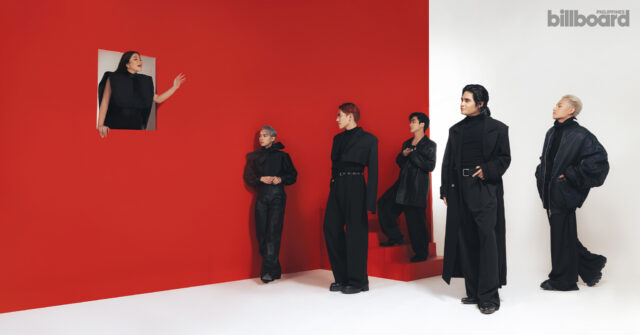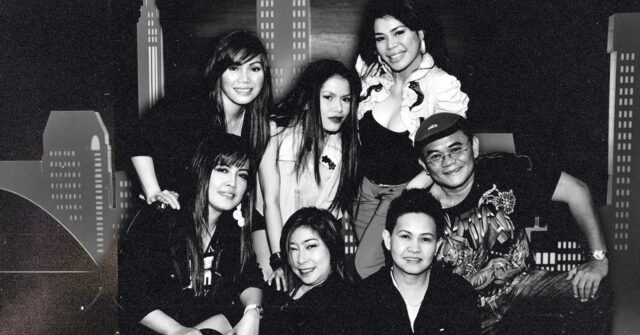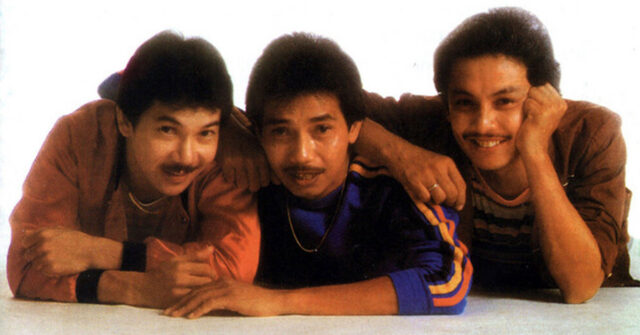Behind The Scenes Of Concerts With The Country’s Best Concert Directors: Floy Quintos, Rowell Santiago, Paolo Valenciano, And Dexter Santos
During the recently concluded Pinoy Playlist Music Festival, the Philippines’ best directors, Dexter Santos, Floy Quintos, Paolo Valenciano, and Rowell Santiago take a deep dive into what it takes to make a concert great, and how to entertain Filipino audiences.

Photographed by Marvin Chua
Photographed by Marvin Chua
The recently concluded Pinoy Playlist Music Festival hosted a wide-range of activities, including performances from upcoming and celebrated musicians, panel discussions with the industry’s leaders, and tributes to some of the most influential people in Filipino music today. Among the events featured in the festival was a panel discussion with celebrated concert directors Floy Quintos, Rowell Santiago, Paolo Valenciano, and Dexter Santos, moderated by Noel Ferrer.
Quintos is a Palanca-award winning artist, with decades of directorial experience for plays, musicals, and different concerts. Some of his work includes the Cultural Center of the Philippines’ 54th Anniversary, the grand opening ceremony of the 2019 SEA Games (together with National Artist for Music Ryan Cayabyab), the Philippines Opera Company’s showcase of Filipino music titled Ang Bagong Harana (The New Serenade), and more.
Known for both his acting and directorial work, Santiago has directed the concerts of some of the biggest names in Filipino music history, such as Odette Quesada’s 40th anniversary celebration, Sharon Cuneta and Regine Velasquez-Alcasid’s Iconic concert, Gary V Live @ 25, and numerous shows with icons like Pops Fernandez, Martin Nievera, Ogie Alcasid, and more.
Santos is an accomplished choreographer and actor, especially with his work in Philippine theatre. He is most notably known for directing and choreographing the Eraserheads jukebox musical Ang Huling El Bimbo and his numerous awards and recognitions over the years, such as Aliw Awards Best Director (2017), Best Special Events Director (2020), Gawad Buhay Outstanding Choreography (2019), and more. He has also been conferred the title of University Artist by the University of the Philippines for his work in theatre.
Valenciano has numerous star-studded concerts under his belt, such as the Eraserheads’ reunion concert held in 2022, the recently-concluded Gary V Back At The Music Museum, the upcoming Regine Rocks concert this November, and many more.
With all four directors staging concerts of all sizes and in different parts of the country, they’ve learned the ins and outs of the country’s hard-to-please audience.
“It’s part of our nature,” Quintos says, when talking about why he thinks Filipino audiences have high standards for entertainment. “But we’re polite. I’ve hardly heard [Filipino] audiences boo…but humanda ka sa social media mamaya” (get ready for the social media backlash later).
“For the audience, it’s important to note that compared to London, Tokyo, [or Los Angeles], Manila is exposed to more concerts. Every week we have shows and a lot of people are going to these shows. [The audience] has expectations because everyone is trying to one-up each other. That’s also why the audience…mas mataas yung standards nila” (Their standards are much higher), Valenciano continues.
Valenciano’s sentiments resonate with the rest of the panel. Santos jumps in by saying that going to a concert is a social and cultural experience in itself. “Filipinos breathe that…eating before the concert, waiting in line…it’s an experience. It’s a social thing, which is very embedded in our culture. It’s just different than watching alone or listening to music on your own. When it comes to the Pinoy audience…concerts are a social experience that is something that people will choose to bank on.”
In order to make a great concert, all four directors emphasize that it takes a full collaboration from all members of the team, whether it’s stage managers, production crew, or sound engineers. “A lot of the credit goes to the people we work with. It makes the work a lot easier,” Santiago says. “I try to always mention the people I’ve worked with…it takes a village to stage a concert.”
As the country recovers from the pandemic, Santos, Quintos, Valenciano, and Santiago all share that audiences are even more hungry for the live music experience.
“The pandemic shaped our hunger for communal experiences,” Quintos explains. “There’s a social interaction with the audience…people respond as a group, as a community. You can’t do that in the cinema. There’s a communion between the artist and audience. You see it happening in front of you.”
Together with their production teams and collaborators, these directors continue to bring the spirit of Filipino music and stage it for a live audience. Whether it’s by creating a story through the concert’s set list and special musical arrangements, or utilizing compelling visuals that decorate the stage, there will always be a unique touch that comes with experiencing live music.





